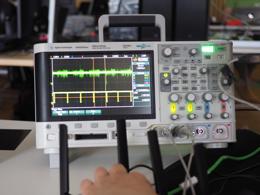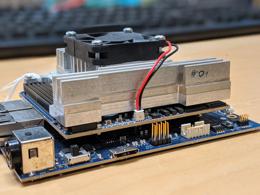Bringing Barebox into OE-Core (Yocto)
Ever wondered how to bring a bootloader into OE-Core? Here is a straightforward guide on how not to give up.
With almost 15 years of history and around 400 individual contributors, Barebox has grown to be one of the widely used bootloaders for embedded Linux platforms, supporting a wide range of architectures including ARM, x86, MIPS, and RISC-V. During this time, OpenEmbedded, which most people nowadays only know as the Yocto Project, grew rapidly and became the standard embedded Linux build system.
This blog post chronicles the multi-year journey to get Barebox accepted into OE-Core — from the early attempts to the eventual success in October 2024. Along the way, we’ll explore the technical hurdles we faced, the community discussions that shaped the process, and the improvements we added to both OE and Barebox.
Usage
For those that just came by to try out the new Barebox integration, this is how you can now write a minimal recipe:
inherit barebox
LIC_FILES_CHKSUM = "file://COPYING;md5=f5125d13e000b9ca1f0d3364286c4192"
SRC_URI = "https://barebox.org/download/barebox-${PV}.tar.bz2"
SRC_URI[sha256sum] = "b08a762da8d63dd18b4f2d9f5d0a8da001b6e608d1b3eff6dcebc6a2e575d535"
Then either add a BSP-level defconfig file to your SRC_URI:
SRC_URI += "file://defconfig""
or set BAREBOX_CONFIG in your machine file to a defconfig provided in your Barebox repository:
BAREBOX_CONFIG = "multi_v8_defconfig"
The class allows using config fragments, supports providing a barebox env directory via BAREBOX_ENV_DIR and inherits the cml1.bbclass that provides the menuconfig and diffconfig task.
History
For those interested in how barebox ultimately made it into oe-core, here's the story.
Earlier Mainlining Approaches
In 2014, two parallel attempts by David Vincent and Stefan Müller-Klieser aimed to provide a recipe for Barebox. Unfortunately, these efforts stalled after the initial submission, at a time when Pengutronix was not yet involved in Yocto/OpenEmbedded.
In the following years, support for barebox fragmented across various external layers like meta-fsl-arm, meta-phtytec, the dedicated meta-barebox and finally 'our' layer meta-ptx.
From the Idea to the Initial Recipes
The plan to bring Barebox into OE-Core grew gradually as we maintained our Barebox recipe in meta-ptx. By 2019, it became a concrete goal. The actual effort kicked off during the first post-COVID Pengutronix TechWeek in September 2021.
By the end of the 2021 TechWeek, we had developed a Barebox recipe based on meta-ptx. We adapted mechanisms from other layers to better fit a more generic setup. One notable improvement was splitting out the barebox-tools recipe, to build the tools separately and for both target and native. As the target and native tools usually need to link against different libraries, the bitbake recipe turned out quite complex.
This was simplified a great deal by our Barebox developer Ahmad Fatoum, stepping in to rework the barebox tools build system for this purpose.
We planned to wait until Ahmad's patches made it into a release, avoiding the need for barebox patches in the first OE-Core submission.
Initial Submission: Concerns and Challenges
But things don't always go according to plan, priorities shift and I became busy with other projects.
In December 2022, Pengutronix developer Marco Felsch took over and a few internal patch reviews later, Marco sent our first series of two patches to the OE-Core mailing list by February 2023:
[OE-Core] [PATCH 1/2] barebox: add initial support [OE-Core] [PATCH 2/2] barebox-tools: add initial barebox tools support
This could have been a simple story, but then Richard Purdie, the Yocto Project main architect, asked the critical question:
"In order to add something to OE-Core, we need to see it being used by a reasonable portion of the ecosystem. Is there enough usage of barebox on common boards that justifies this?"
I responded by highlighting Barebox's maturity and wide adoption, its advantages as a bootloader, and how it adds little maintenance overhead. Barebox, I argued, aligns with OE-Core's goal of providing essential recipes for device bring-up.
While OE developer Otavio Salvador supported the idea of including Barebox in OE, highlighting the potential for reuse and integration with existing U-Boot-centric tooling, another OE-Core developer, Alexander Kanavin, was more skeptical. He raised concerns about the maintainability of adding another bootloader.
However, after a productive discussion on IRC, we reached a consensus: a strong maintenance commitment, combined with QEMU-based test cases for the OE-selftest suite, could justify Barebox's inclusion in OE-Core.
Adding Test Cases
In the following month, we worked to address the concerns raised and the issues identified by the autobuilder. I fixed barebox' musl support and other minor compatibility issues, added myself to the maintainers.inc file, and set reasonable defconfigs for QEMU machines.
I thought, since I was already asked to add QEMU-based test cases for the Barebox recipe — while the U-Boot recipe never had any — it would be a smart move to add tests for both (targeting arm, aarch64, and x86_64). It quickly became clear that testing a bootloader hadn't been done in OE-Core before, and we needed to make some additions to the test code, such as support for capturing the bootloader prompt.
Once those adjustments were made, running the first OE bootloader tests became as easy as:
$ MACHINE=qemuarm64 oe-selftest -r uboot barebox -v -K
This work finally resulted in a v2 series of 7 patches and the first review comment I got from Alex sounded quite promising:
Thanks for persevering with this! The patchset is mostly fine (I'll write a couple comments now), and just needs to get a verdict from the autobuilder.
A further issue we had to address was that with barebox there were suddenly two concurrent providers of virtual/bootloader for the OE-Core QEMU machines. To handle this properly, we adapted the BAREBOX_CONFIG parsing and set PREFERRED_PROVIDER_virtual/bootloader ?= "u-boot" in the QEMU machine configurations to ensure the U-Boot remained the default bootloader.
But, despite this and much more fixed in v3, the autobuilder still failed. Unfortunately, other changes in the test setup interfered with the results, making further debugging quite difficult.
Techweek 2024 — A Turning Point Decision
Our 2024 Techweek in Goslar in the Harz Mountains finally gave me the opportunity to look again into the autobuilder issues. Updating the recipe to a more recent version of Barebox and running the test suite locally revealed a couple of additional issues, which we managed to fix.
However, I couldn't resolve a remaining issue with my adaptations for the hand-crafted QEMU boot log reading test code, which were necessary to handle CRLF line breaks under UEFI. We ultimately decided that, without a proper embedded testing framework like labgrid, it wouldn't be worth the effort to further debug x86 support in the self-tests for now — especially since both U-Boot and Barebox are predominantly used on non-x86 targets. As a result, we removed the x86 tests along with the log readout modifications and were able to run the entire oe-selftest suite without errors.
Barebox: A Class of Its Own
With renewed optimism, and the outstanding review comments of v3 addressed, I finally submitted v4 on 10th September 2024.
In a fruitful discussion with Alexander Kanavin about the purpose and usage of .inc files in our recipe we agreed that although the u-boot recipe has a long history of misusing .inc files by including it across layers as 'external API', a new barebox recipe should do better and put the generic code into a barebox.bbclass.
However, the autobuilder still failed early. This finally turned out to be a false-positive in the maintainer checks that fail to handle recipes that are not parsed by default (e.g. due to PREFERRED_PROVIDER settings). Gladly we were able to fix this and, together with some other minor changes (e.g. for UNPACKDIR), with v7 we had all the missing pieces together and were cautiously optimistic that we could pass both the human review and the autobuilder.
The Last Tough Autobuilder Nut
But, the autobuilder logs that we got from Richard the same day showed that the tests don't pass on an ARM build server of all places: Both barebox and U-Boot hang while running in QEMU without providing any meaningful error output.
After some tinkering and help from Richard, Ahmad finally managed to reproduce this on a ARMv8 SBC running Debian, but only if KVM (Kernel-based Virtual Machine) was enabled.
After some local debugging, Ahmad isolated the problem into two lines of ARM A64 assembly that trigger a data abort under KVM, but work fine without and brought this to the attention of the Linux KVM maintainers.
In the ensuing discussion, it turns out that neither U-Boot nor barebox will be able to run under KVM unmodified, so for the OE-Core test suite, it was decided that explicitly disabling KVM would be the best course of action.
This may change though in the future: Ahmad has since posted patches for barebox adding KVM compatibility and reported the issue for u-boot in case the community is interested in porting the barebox changes.
Mainline!
And finally, for the v8 series, the autobuilder gave green lights and with a tiny extra round Richard accepted the v9 series for OE-Core by the 11. October 2024. 5 years after the initial idea, 1.5 years after the initial submission attempt.
(But the actual journey of maintaining barebox in OE-Core has just begun!...)
Thanks and Call For Contribution
Thanks again to the OE-Core maintainers, especially Richard and Alex, for their reviews, and to everyone who supported Barebox's inclusion.
The initial patch set was intentionally minimally invasive, but future work could make OE-Core mechanisms more bootloader-agnostic without breaking existing setups.
If all goes well, Barebox will be part of the next Poky release, walnascar, in Spring.
For those using older Barebox recipes, we encourage you to switch to barebox.bbclass.
Special thanks to Dennis Menschel who maintained meta-barebox for many years and who already proposed to archive it as soon as walnascar is out.
Weiterführende Links
Signed FIT Image Support for meta-oe (fitimage.bbclass)
FIT images provide a versatile way to bundle components used to boot embedded Linux systems, like the kernel, device tree, ramdisk, firmware, etc. They also support cryptographic signatures, making them ideal for verified boot setups. This blog post introduces the new fitimage.bbclass in meta-oe as an alternative to oe-core's kernel-fitimage.bbclass, with a clear focus on enhancing both versatility and signing support.
DSA in Barebox
The v2022.05.0 Release of barebox introduced initial support for the Distributed Switch Architecture (DSA) Framework. DSA is originally a subsystem from the Linux Kernel, which exposes the individual ports of a network switch IC as virtual network interfaces.
Tutorial: Start With RAUC Bundle Encryption Using meta-rauc
In its current master branch, RAUC now supports encrypted Bundles. This tutorial will introduce you to the basics of using encryption in RAUC and show how to use it in a simplified Yocto setup with the meta-rauc Layer.
Tutorial: Evaluating RAUC on QEMU - A Quick Setup With Yocto
RAUC is an update framework for safely deploying verified updates on your embedded Linux devices. It ensures atomicity of the update process to protect from sudden power outages, hardware failures, etc. So, why would one like to run RAUC on an emulated platform?
Foster mvebu Support in barebox
barebox works great on NXP's i.MX platforms. While there is some support for Marvell's mvebu platform, it is not even near being complete. The main limitation is in my eyes that there is no code to initialize RAM settings on these machines.
Bootstrapping Arria10 with OpenOCD and barebox
The Arria10 SoCFPGA can boot from multiple sources: SD Card, NAND flash, QSPI flash and eMMC, that can be selected via the BSEL pins. If the bootrom can not find a valid bootloader on that medium, it will fall back to JTAG. So for developing and testing, the BSEL pins can just be set to a medium that is non-existent. In case of bootstrapping, the bootrom falls back to JTAG anyway, as there is no valid bootloader, yet.







